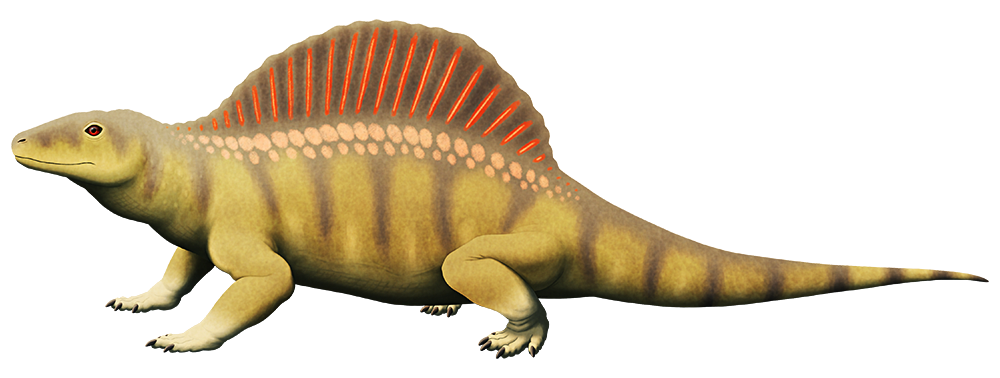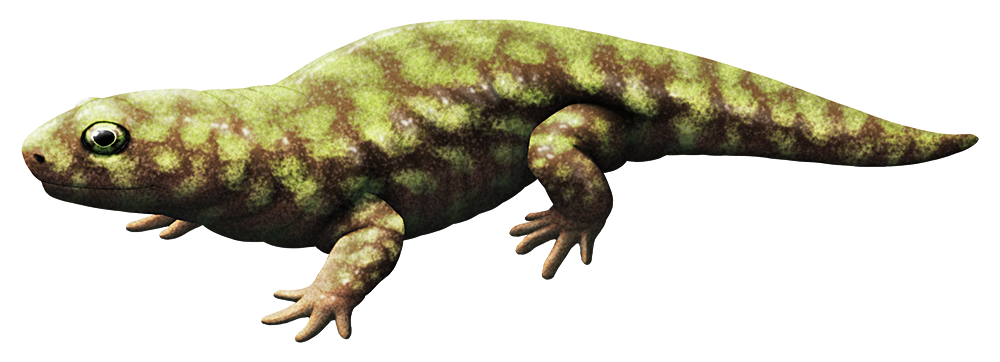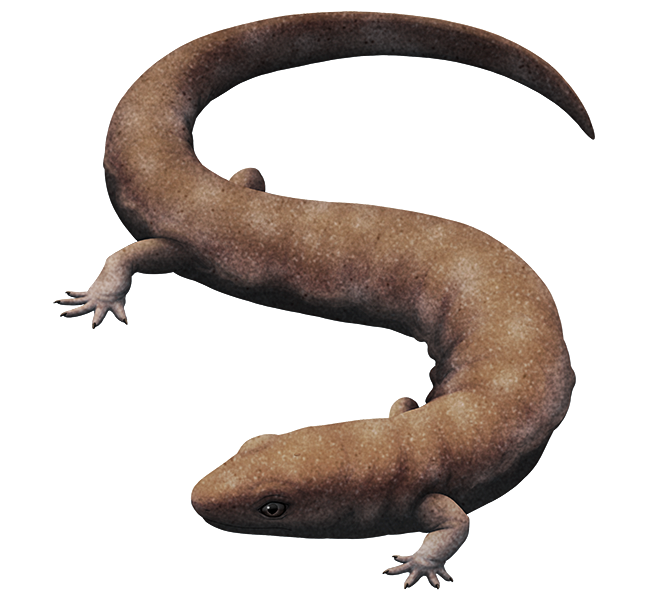Some of the earliest large terrestrial herbivores on Earth were the edaphosaurids – a very early-branching group of synapsids, the evolutionary lineage whose only modern surviving members are mammals. Like their more famous cousin Dimetrodon these animals sported huge elaborate sails on their backs formed from highly elongated vertebral spines, but despite the similarity in appearance they actually seem to have evolved these structures completely independently.
Known from a single partial skeleton discovered in southern New Mexico, USA, the edaphosaurid Gordodon kraineri dates to around the very end of the Carboniferous or the very earliest Permian, about 299 million years ago.
It was fairly small for an edaphosaurid at about 1.5m long (~5′), and seems to have had transitional anatomy between earlier and later members of the group. Its sail spines were thicker than those of earlier species but still less heavyset than those of later forms, and while each spine had numerous side projections these structures were small, thorn-like, and randomly distributed, unlike the more organized thick crossbars seen in Edaphosaurus.
Its head was proportionally small compared to its body, but still relatively large for an edaphosaurid, and it had an unusually long neck for an early synapsid. But its most distinctive features were its jaws and teeth – it had a narrow snout with a pair of large incisor-like teeth at the front of both its upper and lower jaws, followed by a large toothless gap (a diastema) and then a short row of small peg-like teeth. Like Edaphosaurus it also would have had batteries of grinding tooth plates inside its upper and lower jaws, but probably not as extensively.
Overall its tooth arrangment looked more like a modern herbivorous mammal than an early synapsid, much more highly specialized than anything else known to be alive at the time – the next synapsid known to convergently evolve similar teeth lived around 90 million years later!
It probably had a very different diet to its relatives, with its specialized teeth and fairly slender body suggesting it may have been a selective feeder, cropping the softer more nutritious parts of plants like the fleshy seeds and cones of gymnosperm plants.
Its discovery also hints that herbivorous edaphosaurids in general were much more diverse than we previously thought, and there may be even more surprising forms out there still to be discovered.










